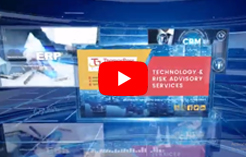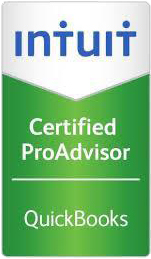
Business Strategies
Business Strategies

Looking to Grow and Improve Your Business
Financial Planning tips for business owners
Consider establishing an employee stock ownership plan (ESOP).
If you own a business and need to diversify your investment portfolio, consider establishing an ESOP. ESOP's are the most common form of employee ownership in the U.S. and are used by companies for several purposes, among them motivating and rewarding employees and being able to borrow money to acquire new assets in pretax dollars. In addition, a properly funded ESOP provides you with a mechanism for selling your shares with no current tax liability. Consult a specialist in this area to learn about additional benefits.
Make sure there is a succession plan in place.
Have you provided for a succession plan for both management and ownership of your business in the event of your death or incapacity? Many business owners wait too long to recognize the benefits of making a succession plan. These benefits include ensuring an orderly transition at the lowest possible tax cost. Waiting too long can be expensive from a financial perspective (covering gift and income taxes, life insurance premiums, appraiser fees, and legal and accounting fees) and a non-financial perspective (intra-family and intra-company squabbles).
Consider the limited liability company (LLC) and limited liability partnership (LLP) forms of ownership.
These entity forms should be considered for both tax and non-tax reasons.
Avoid nondeductible compensation.
Compensation can only be deducted if it is reasonable. Recent court decisions have allowed business owners to deduct compensation when (1) the corporation's success was due to the shareholder-employee, (2) the bonus policy was consistent, and (3) the corporation did not provide unusual corporate prerequisites and fringe benefits.
Purchase corporate owned life insurance (COLI).
COLI can be a tax-effective tool for funding deferred executive compensation, funding company redemption of stock as part of a succession plan and providing many employees with life insurance in a highly leveraged program. Consult your insurance and tax advisers when considering this technique.
Consider establishing a SIMPLE retirement plan.
If you have no more than 100 employees and no other qualified plan, in 2019, you may set up a Savings Incentive Match Plan for Employees (SIMPLE) into which an employee may contribute up to $13,000 per year if you're under 50 years old and $16,000 a year, if you're over 50. As an employer, you are required to make matching contributions. Talk with a benefits specialist to fully understand the rules and advantages and disadvantages of these accounts.
Establish a Keogh retirement plan before December 31st.
If you are self-employed and want to deduct contributions to a new Keogh retirement plan for this tax year, you must establish the plan by December 31st. You don't actually have to put the money into your Keogh(s) until the due date of your tax return. Consult with a specialist in this area to ensure that you establish the Keogh or Keoghs that maximize your flexibility and your annual contributions.
Section 179 expensing.
Businesses may be able to expense up to $1,020,000 in 2019 for equipment purchases of qualifying property placed in service during the filing year, instead of depreciating the expenditures over a longer time. The limit is reduced by the amount by which the cost of Section 179 property placed in service during the tax year 2019 exceeds $2,550,000.
Do not forget deductions for health insurance premiums.
If you are self-employed (or are a partner or a 2-percent S corporation shareholder-employee) you may deduct 100 percent of your medical insurance premiums for yourself and your family as an adjustment to gross income. The adjustment does not reduce net earnings subject to self-employment taxes, and it cannot exceed the earned income from the business under which the plan was established. You may not deduct premiums paid during a calendar month in which you or your spouse is eligible for employer-paid health benefits.
Review whether compensation may be subject to self-employment taxes.
If you are a sole proprietor, an active partner in a partnership, or a manager in a limited liability company, the net earned income you receive from the entity may be subject to self-employment taxes.
Don't overlook minimum distributions at age 70½ and rack up a 50 percent penalty.
Minimum distributions from qualified retirement plans and IRAs must begin by April 1 of the year after the year in which you reach age 70 1/2. The amount of the minimum distribution is calculated based on your life expectancy or the joint and last survivor life expectancy of you and your designated beneficiary. If the amount distributed is less than the minimum required amount, an excise tax equal to 50 percent of the amount of the shortfall is imposed.
Don't double up your first minimum distributions and pay unnecessary income and excise taxes.
Minimum distributions are generally required at age seventy and one-half, but you are allowed to delay the first distribution until April 1 of the year following the year you reach age seventy and one-half. In subsequent years, the required distribution must be made by the end of the calendar year. This creates the potential to double up in distributions in the year after you reach age 70 1/2. This double-up may push you into higher tax rates than normal. In many cases, this pitfall can be avoided by simply taking the first distribution in the year in which you reach age 70 1/2.
Do not forget filing requirements for household employees.
Employers of household employees must withhold and pay social security taxes annually if they paid a domestic employee more than $2,100 a year in 2019 (same as 2018). Federal employment taxes for household employees are reported on your individual income tax return (Form 1040, Schedule H). To avoid underpayment of estimated tax penalties, employers will be required to pay these taxes for domestic employees by increasing their own wage withholding or quarterly estimated tax payments. Although the federal filing is now required annually, many states still have quarterly filing requirements.
Consider funding a nondeductible regular or Roth IRA.
Although nondeductible IRAs are not as advantageous as deductible IRAs, you still receive the benefits of tax-deferred income. Note, the income thresholds to qualify for making deductible IRA contributions, even if you or your spouse is an active participant in an employer plan, are increasing.
The $100,000 income test for converting a traditional IRA to a ROTH IRA was permanently eliminated in 2010, allowing anyone to complete the conversion.
You can withdraw all or part of the assets from a traditional IRA and reinvest them (within 60 days) in a Roth IRA. The amount that you withdraw and timely contribute (convert) to the Roth IRA is called a conversion contribution. If properly (and timely) rolled over, the 10 percent additional tax on early distributions will not apply. However, a part or all of the distribution from your traditional IRA may be included in gross income and subjected to ordinary income tax.
Caution: You must roll over into the Roth IRA the same property you received from the traditional IRA. You can roll over part of the withdrawal into a Roth IRA and keep the rest of it. However, the amount you keep will generally be taxable (except for the part that is a return of nondeductible contributions) and may be subject to the 10 percent additional tax on early distributions.
Calculate your tax liability as if filing jointly and separately.
In certain situations, filing separately may save money for a married couple. If you or your spouse is in a lower tax bracket or if one of you has large itemized deductions, filing separately may lower your total taxes. Filing separately may also lower the phase-out of itemized deductions and personal exemptions, which are based on adjusted gross income. When choosing your filing status, you should also factor in the state tax implications.
Avoid the hobby loss rules.
If you choose self-employment over a second job to earn additional income, avoid the hobby loss rules if you incur a loss. The IRS looks at several tests, not just the elements of personal pleasure or recreation involved in the activity.
Review your will and plan for post-mortem tax strategies.
Several tax planning strategies can be implemented soon after death. Some of these, such as disclaimers, must be implemented within a certain period after death. Several special elections are also available on a decedent's final individual income tax return. Also, review your will as the estate tax laws are in flux and your will may have been written with differing limits in effect. In 2019, estates of $11,400,000 (up from $11,180,000 in 2018) are exempt from the estate tax with a 40 percent maximum tax rate (made permanent starting in tax year 2013).
Check to see if you qualify for the Child Tax Credit.
For tax years 2018 through 2025, the child tax credit increases to $2,000 per child, up from $1,000 in 2017, thanks to the passage of the TCJA. The enhanced child tax credit, which was made permanent by the Protecting Americans from Tax Hikes Act of 2017 (PATH), remains under TCJA. The refundable portion of the credit increases from $1,000 to $1,400 so that even if taxpayers do not owe any tax, they can still claim the credit. Under TCJA, a $500 nonrefundable credit is also available for dependents who do not qualify for the child tax credit (e.g., dependents age 17 and older).
For tax year 2017, a $1,000 tax credit was available for each dependent child (including stepchildren and eligible foster children) under the age of 17 at the end of the taxable year. The child credit generally is available only to the extent of a taxpayer's regular income tax liability. However, for a taxpayer with three or more children, this limitation is increased by the excess of Social Security taxes paid over the sum of other nonrefundable credits and any earned income tax credit allowed to the taxpayer. For 2017 (as in previous years), the income threshold is $3,000.
For more information concerning these financial planning ideas, please call or email.
| Also See... |
Cash Flow - The Pulse of Your Business
Employee Benefits: How To Handle Them
Employee Benefits: Frequently Asked Questions
The "SIMPLE" Plan: A Retirement Plan for the Really Small Business
Small Business: Frequently Asked Questions
Financing Questions: Frequently Asked Questions
How many units do I need to sell to breakeven?
What are my business financial ratios?

The support you deserve
We provide excellent support through professionalism, responsiveness and quality.
Read More
Security You can trust
Your data is safe with us. Our Client Portal protects you with 14 full layers of security.
Read More
Service you rely on
We offer a broad range of services to help clients secure a sound financial future.
Read MoreBusiness Transformation and Strategy
CAPITAL MARKET
FINANCIAL CHARTS
Get real-time information and market insights
Develop A Cloud Technology Strategy that Powers Your Bottom Line
With our full range of industry leading products, we can assess complex situations, and provide the best technology tools to address your future growth.
Learn More



